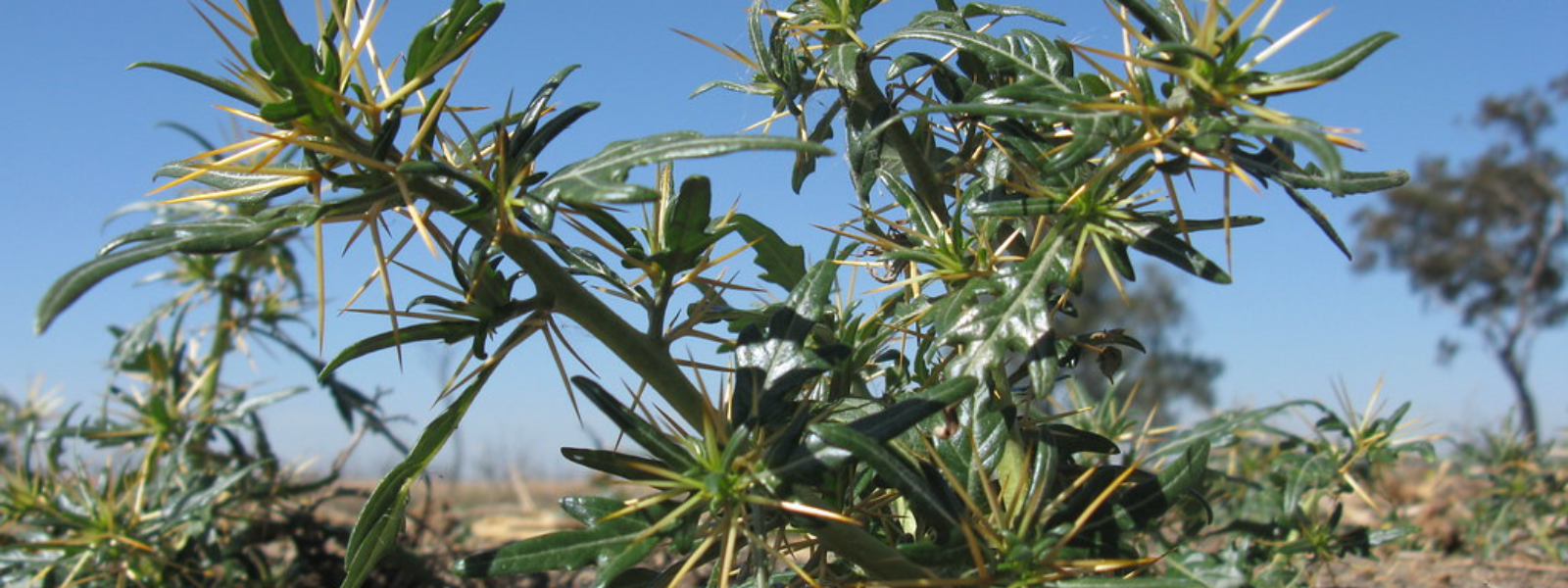
Common Name
Bathurst Burr, Spiny Cocklebur, Spiny Burweed, Spiny Clotbur, Dagger Cocklebu, Daggerweed, Prickly Burweed, Thorny Burweed
Scientific Name
Xanthium spinosum
Family
Asteraceae
Lifecycle
Annual
Seasons of Growth
Spring to Autumn
Key Distinguishing Feature
Spiny fruiting heads that stick to clothing or fur
• Growth Form: Bathurst Burr is a low-growing, bushy plant that can reach up to one meter in height.
• Leaves: The leaves are alternate, roughly triangular, and have serrated margins. They are typically green but can vary in colour.
• Stems: The stems are often branched and covered in fine hairs.
• Flowers: The small, greenish-yellow flowers of Bathurst Burr are inconspicuous and occur in clusters.
• Fruit: The fruit is a distinctive, hard, and spiky burr containing two seeds. These burrs can easily attach to fur, clothing, or animal hide, aiding in seed dispersal.
• Habitat: It is commonly found in disturbed areas, pastures, along roadsides, and in cultivated fields.
Ecological Impact:
• Bathurst Burr is considered an invasive weed in many regions, particularly in Australia. It can outcompete native vegetation and disrupt natural ecosystems.
• The spiky burrs can be a nuisance to animals, as they can attach to fur or hooves.
Control Methods:
• Control of Bathurst Burr often involves a combination of mechanical, chemical, and cultural methods.
• Mechanical methods include hand-pulling or cutting the plants before they produce seeds. Proper disposal of the seed-containing burrs is essential.
• Herbicides may be used for control, but care must be taken to use them safely and effectively, following local regulations.
• Implementing good land management practices, such as rotational grazing and maintaining healthy pastures, can help reduce the establishment and spread of Bathurst Burr.
Bathurst Burr is a weed of concern in regions where it has become invasive, and its management requires diligent efforts to prevent its spread and protect both natural ecosystems and agricultural lands. Local authorities and agricultural extension services often provide guidance on the best control practices for this invasive plant.
Key Products for Control:
-
Adama Ametrex - Ametryn
-
Adama Gauntlet - MSMA
-
Indigo MetForce - Metsulfuron Methyl




